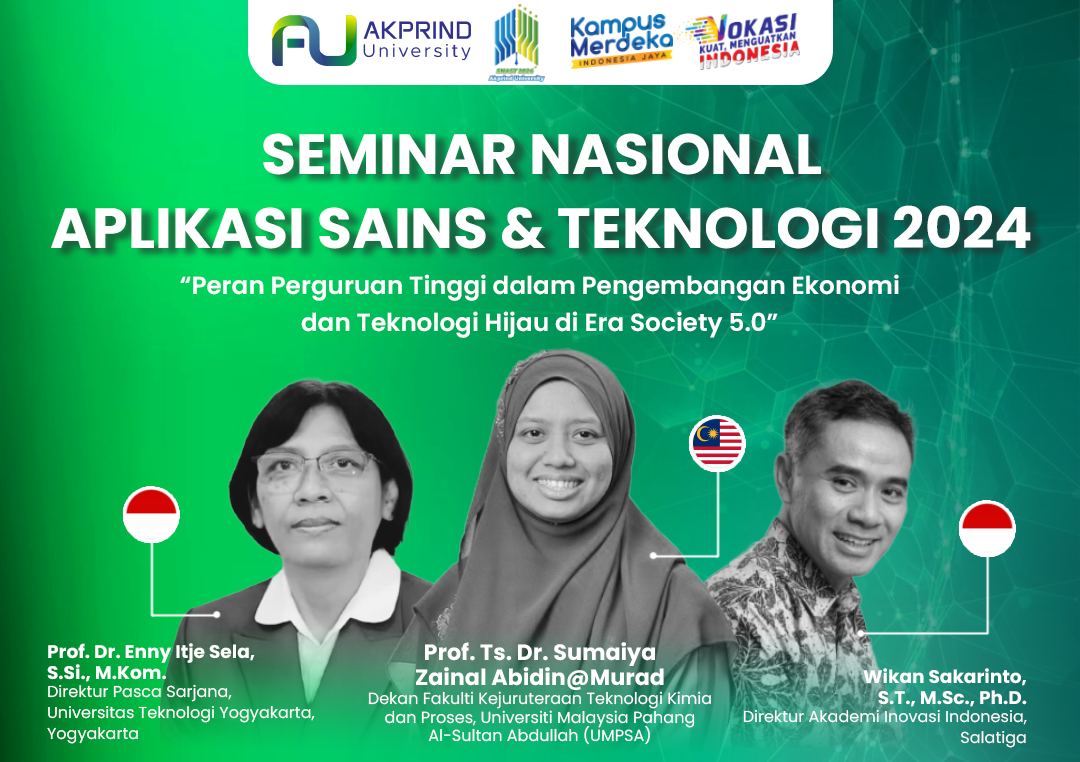KAJI EKSPERIMENTAL PENGARUH CAMPURAN BIOETANOL DARI MOLASSE PADA BAHAN BAKAR GASOLINE TERHADAP EMISI GAS BUANG YANG DIHASILKAN
DOI:
https://doi.org/10.34151/prosidingsnast.v1i1.4951Keywords:
Bioetanol, Molasse, PertaliteAbstract
Bioethanol is an alcohol compound that comes from the fermentation process of carbohydrate compounds using the help of the microbe saccaromyches cereviceae. Bioethanol production from plants containing cellulose, including molasses, is carried out through the conversion process of lignocellulose into cellulose using several methods, namely; physical, chemical and biological hydrolysis. Molasses which comes from the Gendis Multi Manis Jepon Blora Sugar Factory, Central Java, is a by-product of the sugar processing industry which still contains sugar and organic acids. The molasses produced has a fairly high sucrose content in molasses, around 48-55% so it can be used as a good raw material for making ethanol. The results of tests carried out using a mixture of Bioethanol with Pertalite fuel have an influence on exhaust gas emissions by increasing the bioethanol mixture. produces different values of CO, HC, CO2, O2. The highest CO value in pure pertalite fuel is 7.79% and the lowest CO value is in the 30% Bioethanol mixture, namely with a CO value of 0.27%. The highest HC value in pure pertalite fuel is 7.31 ppm and the HC value the lowest was in the 10% Bioethanol mixture, namely 1.52 ppm. The highest CO2 value was in the 30% Bioethanol mixture, namely 9.00% and the lowest CO2 value was in the 10% Bioethanol mixture, namely with a CO2 value of 2.30%. Furthermore, the highest O2 value was in the 30% Bioethanol mixture, namely 14.46% and the lowest O2 value was in the 10% Bioethanol mixture, namely with an O2 value of 3.46%.
References
Afrah, M. (2019). Strategi Pengembangkan Industri Hilir Pabrik Gula. Buletin Utama Teknik, 14(2), 136–139. https://ejournal.unesa.ac.id/index.php/avatara/article/view/48129/40181 (N.d.). Retrieved from https://www.gendhismultimanis.com/brand-kami/molasses/
Amin, M. C., Taufiq, A. J., dan Kurniawan, I. H. (2019). Pemanfaatan Ampas Tebu Sebagai Pembangkit Listrik Biomassa di PG. Sragi Pekalongan. Jurnal Riset Rekayasa Elektro, 1(1), 1–10. https://doi.org/10.30595/jrre.v1i1.4922
Anggraini, S. A., Yuniningsih, S., dan Sota, M. M. (2017). Pengaruh pH terhadap Kualitas Produk Etanol dari Molasses Melalui Proses Fermentasi. Reka Buana, 2(2), 99–105.
Arif, A. Bin, Diyono, W., Budiyanti, A., dan Richana, N. (2016). Analisis Rancangan Faktorial Tiga Faktor Untuk Optimalisasi Produksi Bioetanol Dari Molases Tebu. Informatika Pertanian, 25(1), 145. https://doi.org/10.21082/ip.v25n1.2016.p145-154
Cao, G., Zhang, X., Gong, S., dan Zheng, F. (2008). Investigation on emission factors of particulate matter and gaseous pollutants from crop residue burning. Journal of Environmental Science, 20, 50–55. https://doi.org/10.1016/S1001-0742(08)60007-8
Efendi, Y.A., Sutanto, R., Rachmanto, T. (2022). Pengaruh Waktu Fermentasi dan Persentase Ragi Terhadap Hasil Akhir Kadar dan Volume Etanol Pada Molase Sebagai Bahan bakar Kompor Bioetanol. Dinamika Teknik Mesin, vol 2 (6), 1-7.
Fifendy, M., Irdawati, dan Eldini. (2013). Pengaruh Pemanfaatan Molase terhadap Jumlah Mikroba dan Ketebal Nata pada teh Kombucha. Prosiding Semirata FMIPA Universitas Lampung, 67–72.
Friedlingstein, P., Andrew, R. M., Rogelj, J., Peters, G. P., Canadell, J. G., Knutti, R., Luderer, G., Raupach, M. R., Schaeffer, M., Vuuren, D. P. V., dan Quéré, C. L. (2014). Persistent growth of CO2 emissions and implications for reaching climate targets. Nature Geoscience, 7(10), 709–715. https://doi.org/10.1038/ngeo2248
Juwita, R. (2012). Studi produksi alkohol dari tetes tebu (Saccharum officinarum L) selama Proses Fermentasi. Skripsi. https://core.ac.uk/download/pdf/25487002.pdf
Kemal, M., Sayin, C., dan Canakci, M. (2014). The Effect of Different Alcohol Fuels on the Performance, Emission and Combustion Characteristics of a Gasoline Engine. Fuel, 115, 901–906. https://doi.org/10.1016/j.fuel.2012.09.020
Likhanov, V. A., dan Lopatin, O. P. (2020). Development of Environmentally Friendly Alcohol-Fuel Emulsions for Diesel Engines. Journal of Physics: Conference Series, 1515(4), 1–5. https://doi.org/10.1088/1742-6596/1515/4/042019
Mayasri, A. (2023). Fermentasi Molase Dari Tetes Tebu Sebagai Alternatif Bahan Bakar Terbarukan. Lantanida Journal, Vol. 11 (1), 1-106.
Rossi, L. M., Gallo, J. M. R., Mattoso, L. H. C., Buckeridge, M. S., Licence, P., dan Allen, D. T. (2021). Ethanol from Sugarcane and the Brazilian Biomass-Based Energy and Chemicals Sector. ACS Sustainable Chemistry and Engineering, 9(12), 4293–4295. https://doi.org/10.1021/acssuschem eng.1c01678
Siahaan, B.M.D. (2022). Pra-Rancangan Pabrik Bioetanol Dari Tetes Tebu (Molase) Melalui Fermentasi Kapasitas 30.000 Ton/Tahun: Pemurnian Produk Melalui Proses Dehidrasi Dengan Metode Adsorpsi Molecular Sieve (Ms). Skripsi. https://repositori.usu.ac.id/handle/123456789/51162
Tartakovsky, L., dan Sheintuch, M. (2018). Fuel Reforming in Internal Combustion Engines. Progress in Energy and Combustion Science, 67, 88–114. https://doi.org/10.1016/j.pecs.2018.02.003
Downloads
Published
Issue
Section
License
Copyright (c) 2024 Drajat Indah Mawarni

This work is licensed under a Creative Commons Attribution-ShareAlike 4.0 International License.







